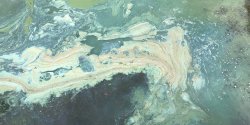The Phytoplankton Lab in the NJCWST studies the biodiversity of aquatic microorganisms and investigates the changing dynamics of cyanobacteria-dominated harmful algal blooms. Phytoplankton–photosynthetic microorganisms that drift throughout open waters–are incredibly diverse, and serve an invaluable ecological service by producing more than half of the world’s oxygen. The term “phytoplankton” may refer to dinoflagellates, diatoms, algae, and cyanobacteria.
To provide a visual resource for identification of common cyanobacteria found in lakes, rivers and reservoirs of New Jersey, NJCWST created a Visual Guide to Cyanobacteria in New Jersey. NJCWST also created a Guide to Freshwater Algae of New Jersey, which covers a wide variety of algae and other microorganisms that can be found in New Jersey’s freshwater environments.
Our Visual Guide to Cyanobacteria in New Jersey is also available as a booklet! To request a free copy of this booklet, please complete the request form.
While there is no single factor that triggers a harmful algal bloom event, conditions including pollutions and increased nutrient influx can lead to the rapid growth of cyanobacteria; though cyanobacteria are a natural part of healthy ecosystems, this abnormally rapid growth is part of what constitutes a cyanobacterial harmful algal bloom (HAB). These blooms are a major public health concern, due to the dangerous cyanobacterial toxins (cyanotoxins) they can produce, as well as an ecological concern; harmful cyanobacterial blooms can create deadly anoxic conditions for aquatic wildlife.
Cyanotoxins include neurotoxins, which affect the nervous system; hepatotoxins, which affect the liver; dermatoxins, which affect the skin; and other classes of toxins. Some of the most common toxins associated with human illnesses are microcystins, cylindrospermopsin, anatoxins, and saxitoxins. Based on the current trend of global climate change, cyanobacteria-dominated harmful algal blooms are expected to increase in both frequency, duration and magnitude resulting in declining water quality and damaging ecosystem integrity.
If there is a HAB present, the water can range from pea-green to blue-green in color. The water’s surface may have parallel streaks, a spilled paint appearance, foam, or scum. There may be green globs/dots in the water. If you suspect there is a HAB, when in doubt, stay out of the water!
Protecting yourself, your loved ones, and your pets
- Rinse yourself and your pets off after swimming.
- Avoid drinking water from lakes and rivers. Pets should also avoid drinking the water.
- Pay attention to any warning signs posted.
- Avoid taking boats, canoes, kayaks, jet skis, and other watercrafts through algal blooms.
- If anyone becomes ill after swimming, seek medical attention immediately.
- Seek veterinary assistance immediately if a pet appears ill.
- Signs of illness in humans include: numbness of lips, tingling in fingers and toes, dizziness, headache, rash or skin irritation, abdominal pain, diarrhea, or vomiting.
- Signs of illness in pets include: weakness, staggering, convulsions, difficulty breathing, or vomiting.
Steps to help reduce HABs
- Proper septic system maintenance by ensuring there isn’t any leaks.
- If you have pets, pick up and dispose of pet waste.
- Don’t overwater your garden or lawn, and water during cooler times of the day.
- Planting certain native plants can act as a buffer, filtering out nutrients from runoff!
- Apply only phosphorus-free fertilizer on your lawn and garden.
- Use phosphorus-free detergents.
- When your car needs a wash, consider taking it to a commercial car wash facility.
- Washing your car on your driveway means that the soapy water could go right down a storm drain, and out into a waterbody.
- Commercial car washes are required to dispose of the wastewater properly.
Our current research topics include
- Abundance and distribution of phytoplankton and cyanobacteria throughout New Jersey
- Fate and transport of cyanobacteria and cyanotoxins
- Research and development of ultrasonic technology for the management of cyanobacteria
- Efficacy of drinking water treatment processes in removing cyanobacteria and cyanotoxins
Our capabilities include
- Phytoplankton identification and enumeration using
- Automatic counting with FlowCam®
- Direct counting via hemacytometer, Sedgwick rafter, Palmer-Maloney chamber, and Utermöhl.
- Quantification of cyanotoxins: microcystins, anatoxin-a, cylindrospermopsin, saxitoxins and BMAA
- Cyanobacteria and cyanotoxin genetics by quantitative polymerase chain reaction (qPCR)
- Chlorophyll a, fluorescence of chlorophyll, and fluorescence of phycocyanin
- Water quality parameters; see Water Analysis Laboratory
Contact
Dr. Meiyin Wu
Director
Montclair State University
Center for Environmental and Life Sciences 300
Montclair, NJ 07043 USA
- Phone: 973-655-7117
- E-mail: wum@montclair.edu
